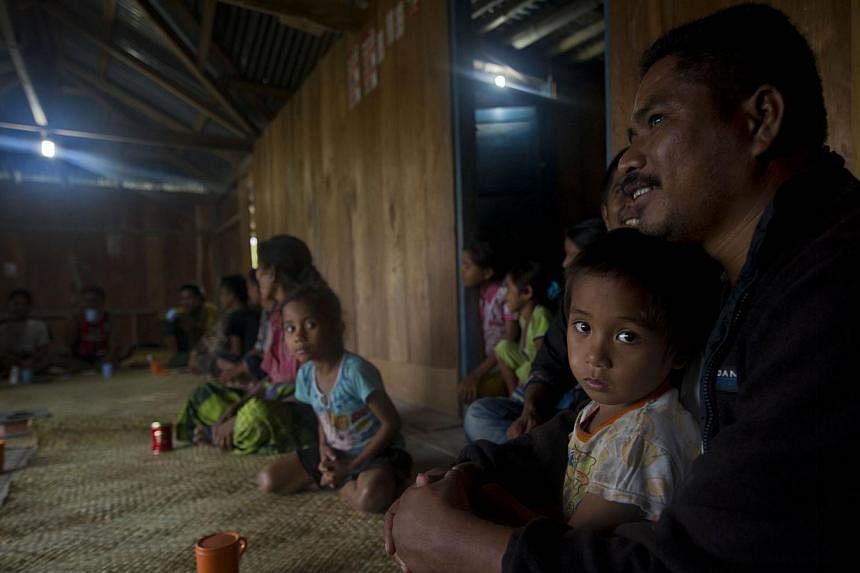KAMANGGIH, Indonesia (AFP) - An Indonesian family of farmers eat cobs of corn outside their hut under the glow of a light bulb, as the women weave and young men play with mobile phones.
Until two years ago, most people in Kamanggih village on the island of Sumba had no power at all. Now 300 homes have access to 24-hour electricity produced by a small hydroelectric generator in the river nearby.
"We have been using the river for water our whole lives, but we never knew it could give us electricity," Adriana Lawa Djati told AFP, as 1980s American pop songs drifted from a cassette player inside.
While Indonesia struggles to fuel its fast-growing economy, Sumba is harnessing power from the sun, wind, rivers and even pig dung in a bid to go 100 percent renewable by 2025.
The ambitious project, called the "Iconic Island", was started by Dutch development organisation Hivos and is now part of the national government's strategy to almost double renewables in its energy mix over the next 10 years.
Sumba, in central Indonesia, is an impoverished island of mostly subsistence farmers and fishermen. Access to power has made a huge difference to people like Ms Djati.
"Since we started using electricity, so much has changed. The kids can study at night, I can weave baskets and mats for longer, and sell more at the market" she said.
While only around 30 per cent of Sumba's 650,000 people have been hooked up to the power grid, more than 50 per cent of electricity used now on the island comes from renewable sources, government data show.
As more communities gain access to power for the first time, the Iconic Island project envisages entire communities skipping dirty, fossil fuel-based energy altogether and jumping straight to green sources.
Hivos's field coordinator for Sumba, Adrianus Lagur, said that the NGO hoped the project would be replicated by other islands in the same province of East Nusa Tenggara, one of the country's poorest.
"The idea is not to give handouts. We support the building of green energy infrastructure, but it's up to the people to manage this resource and keep it going," Mr Lagur said.
Indonesia is the world's fourth most populous country, with around 250 million people, and is Southeast Asia's biggest economy.
Yet it is one of the region's most poorly electrified, partly because it sprawls over 17,000 islands of which more than 6,000 are inhabited. Spreading infrastructure over such a vast area is no easy task.
Despite enjoying economic growth of around six percent annually in recent years, Indonesia is so short of energy that it rolls out scheduled power cuts that cripple entire cities and sometimes parts of the capital.
To keep up with growth, Indonesia is planning to boost its electricity capacity by 60 Gigawatts (GW) over a 10-year period to 2022. Twenty percent of that is to come from renewable sources.

